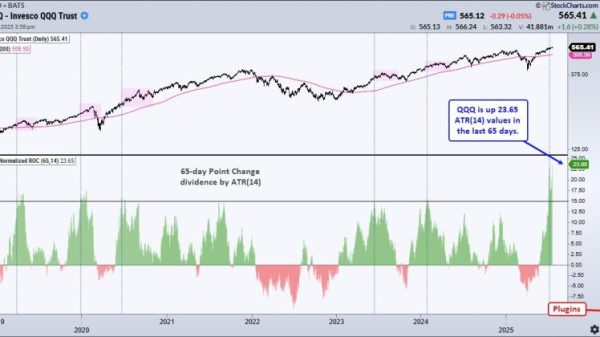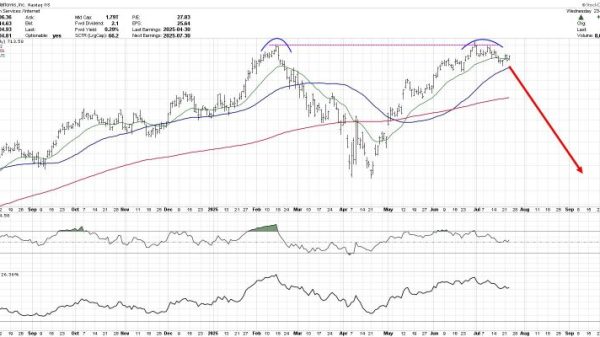There are very real pressures that exist because of the recent increase in immigrants to the United States. The number of immigrants who have been released into the country to await legal proceedings is over 2 million since 2021 — an unusually large number but a smaller one than is often presented in political rhetoric. Those millions of individuals need housing and food, something that has put a strain on social service programs nationwide.
This increase also has been a jumping-off point for another universe of complaints: that the arrival of these immigrants threatens the United States itself. This can be framed abstractly, as in recent CBS News polling showing that a plurality of Americans think the increase will hurt American society. Or it can be framed in more aggressively toxic terms, like Donald Trump’s comments about how immigrants are “poisoning the blood” of the country.
There is an unquestionable component of race to those complaints, given how immigration has shifted since the 1960s to be predominantly from Mexico, Central America and Asia. But even without that racial element, the backlash echoes past anti-immigration rhetoric in ways that are revealing.
As you’re probably aware, immigration to the United States has waxed and waned over history. A century ago, for example, there was a similar outcry about the increase in new arrivals to the United States, with ships full of immigrants arriving at Ellis Island or West Coast ports.
At the time, the new arrivals to New York earning Americans’ scorn were from Italy, Greece and Eastern Europe — ethnic groups that were often viewed as dangerous and threatening to American values. The surging Ku Klux Klan targeted the Catholic arrivals. An editorial in this very paper decried a bombing on Wall Street — blamed on Italian anarchists — as serving to emphasize “the extent to which the alien scum from the cesspools and sewers of the Old World has polluted the clear spring of American democracy.”
There is an extensive debate about the extent to which these new immigrants were considered “White” in the cultural understanding of the time. To some extent it doesn’t matter: They were treated as different from the established White majority, as Cybelle Fox and Thomas A. Guglielmo argued in their 2012 paper, “Defining America’s Racial Boundaries.”
“These boundaries were ‘race based’ because a broad swath of white Americans (among others) saw these newcomers as constituting a range of big and small and overlapping European races — Hebrew and Jew, Italian and southern Italian, Slav and Slovak, Latin and Iberic, Alpine and Mediterranean — that differed from and paled in comparison to other European races, namely, the Anglo-Saxon, Nordic, Aryan, and Teutonic,” wrote Fox and Guglielmo. “The former” — that is those new arrivals — “so the conventional wisdom went, were biologically and culturally less intelligent, more criminal, less manly, less courageous, less fit (if fit at all) for self-government, and, thus, were a serious menace to the American nation.”
But it often did matter for legal purposes, such as attaining citizenship. This presented (and continues to present) situational racial determinations. Fox and Guglielmo describe the situation faced by Mexican immigrants in the same period — a group that has many members who, as now, appear to be White.
“Mexicans might be considered white in one town and not in another,” they write, “white in Santa Barbara in 1880 but not in the same city in 1920, white for the purposes of naturalization law but not for the school board, or white for the 1920 census but not for the 1930 one.”
Racial determination occurs for official reasons and cultural ones, with those excluded from the in-group — historically dominated (and policed) by Whites — as secondary, inferior or threatening. The reason that Americans of Greek and Italian (and, before them, Irish) descent no longer trigger the same negative connotations as described by Fox and Guglielmo is largely because they were integrated into that in-group.
By 1980, decades after the peak of immigration from those countries, nearly a quarter of Americans identified as having some Italian or Irish ancestry. Add in Polish, and you get to about 27 percent. That’s about as many Americans as identified as having English or French ancestry.
A lot of that ancestry had already been lost, though. An Italian woman married a native-born American man of English ancestry and took his name and, in short order, the Italian background might be lost. This occurred frequently in the Southwest, too, where many people of what we would now call Hispanic ethnicity (and Mexican heritage) were integrated into families that were eventually simply considered White.
In the most recent census, the percentage of U.S. residents identifying Italian, Irish or Polish ancestry is down to 17 percent. The percentage of residents who identify as Hispanic was at 19 percent. That includes a lot of different ancestries, though, from European to Central American to South American countries.
But this is also the predicate for much of the concern about America’s future, projections that the country’s White majority will fall to minority status in the coming decades. That is the projection, but it’s incomplete. It’s mostly a function of a projected increase in Hispanic U.S. residents, though research suggests that Hispanic identity erodes over generations. Even taking the Census Bureau’s numbers as presented, it anticipates the native-born population of Hispanics constituting about a fifth of the country by 2060 — less than the percentage of people of Irish, Italian and Polish heritage in 1980.
It was true that America was changed by these immigrants, bringing with them pasta, pierogies and St. Patrick’s Day, among other things. They moved from disliked and feared, blocked by law, to just shrug-your-shoulders Americans. Unquestionably, the number of people with ancestors from those countries — or from Mexico, for that matter — is larger than measured or even recognized by the people themselves.
Again, it’s clear why there’s so much agita about the increase in immigration recently, given the pressures that result from their arrival. But it’s useful to also remember that Americans have expressed many of the same concerns about past waves of immigrants, concerns that now seem antiquated or offensive.





























